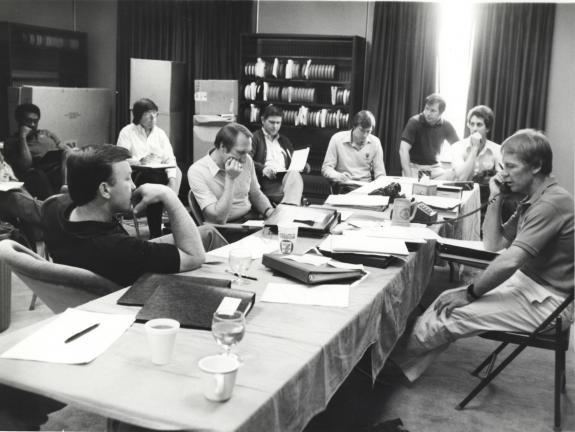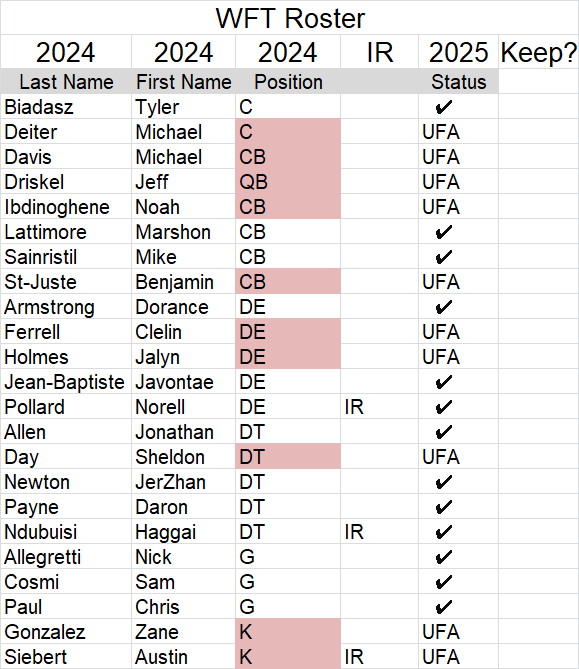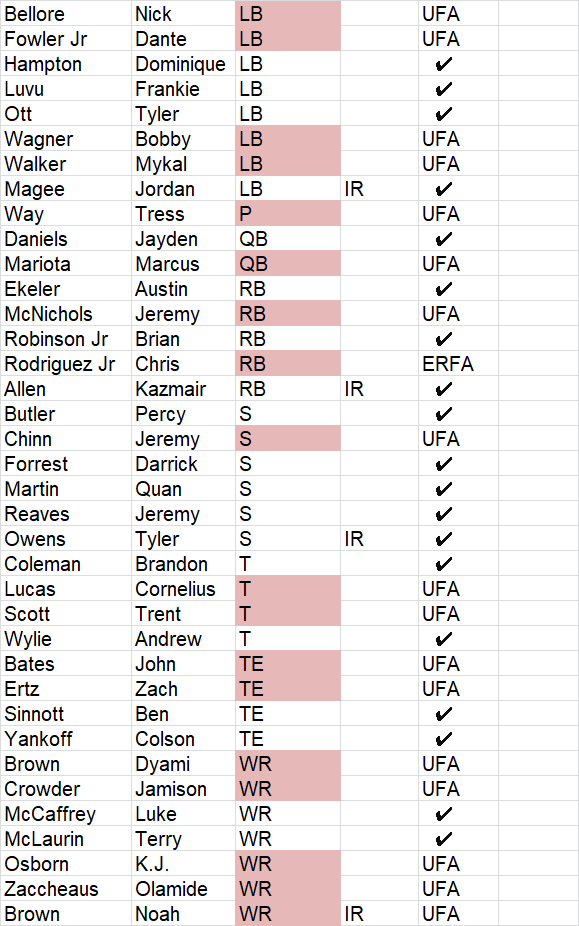
Once upon a time in the NFL there was no “Free Agency.” Drafts went to 20-rounds. Hall-of-Fame Linebacker Chris Hanburger was taken in the 18th round in the 1965 Draft. He found out he was drafted when a reporter called him for comment. Teams retained the rights of a player until he was cut, traded, or retired. As a result Training Camp became the place where the roster was really formed. There the 20 Draftees and the veterans fought for a roster spot and a paycheck for the winter. That’s all gone by the stern now. The modern process is a study in 3D Chess with a strict clock counting cadence. Long before Training Camp the roster is set to within a few players. Camp is for installing the Offense and Defense. The first stage of roster construction is upon the WFT and all the other teams in the League.
Stage One
There are dozens of variations on a basic theme across various disciplines about how to approach tasks or projects. They make nice circular graphics to depict the life cycle of implementing something. Most disciplines add unique steps. But, they all have their roots in the simplest form: Assess, Plan, Implement, and then Evaluate. Educators break down Planning into Design and Development. On and on that goes.
The basic difference between an NFL General Manager and a Construction Superintendent is that the ground is always moving under the GM. In construction some things are situational. In football everything is. If there is a religion in professional football it is Analysis. Unlike Project Management football front offices are engaged in assessment of everyone in the game. Former GM Pat Kirwan says that teams have Scouting Reports on everyone right down to the Water Boy. They get updated on a constant basis.
Everything is in motion all the time. Unlike the construction person ordering drywall the NFL GM has no assurances that the planned course for a player will come to fruition. A roster is a collection of assets that are each independent contractors. Each player has four different valuations: His own, his agent’s, the other teams in the League’s, and finally the team has at least two valuations. One is the “Get” price. The other is the “Walk Away” price. The plan for every player and position has to have multiple contingencies.
It’s not a job for the linear-minded.
Against that backdrop the NFL calendar takes Center Stage. After the final seconds of the Super Bowl the first segment of the Roster Building Season starts. It will last until March 12.
Phase 1: Sign Your Own
Until that March 12 deadline teams are free to re-sign players on the verge of Free Agency that were on their roster during the 2024 season. This can be done without other teams being able to contact the players or make them offers through their agents. The question is: Whom do you want to keep?

This is where Washington is in a peculiar situation. It said here multiple times last year that the WFT was not a Super Bowl contender. Yet, at the end of the year they came within a game of being in it. They “Outkicked their Coverage” as is often said. One young so-called “Analyst” described Washington as an “Elite Team.” By roster construction it was not. It was a fairly average team with an Elite Quarterback. Now the goal will be to improve the roster to meet the standard set this year with a much more imposing schedule on the horizon. The old Business adage holds true here: “If you’re not improving, you’re losing ground.”
If you’re not improving you’re losing ground
Well-worn Business Adage
2024 was a team built on one-year Free Agents. The one-year is now gone. Who among that slew of players is worth re-signing? Let’s take a look at the basic roster:


The ✔ indicates the player is under contract for 2025.
Note the position rooms that are down to bare bones. The Kicker/Punter Room is empty. There are only two Wide Receivers under contract. This roster has more huge holes in it than a block of Swiss Cheese.
So, Adam Peters has two sets of decisions to make with this roster: Which UFA’s to attempt to re-sign? And, which players under contract to either a) cut, b) restructure, c) reduce, d) extend, or e) attempt to trade?
Speaking of trades; Myles Garrett for two number 1’s, Daron Payne, and young Brandon Coleman? One writer had that proposal this morning. Note to the author of that piece: Daniel Snyder has left the building. This crew isn’t that short-sighted.
March 12
All of those decisions have to be made before March 12. The old saw is that you have to “Replace Talent with Talent.” The players you wave goodbye to have to be replaced by at least equal or better. If equal, then why bother unless it’s cheaper? It’s all about upgrades. Who’s on the Free Agent board? We’ll look at that next. In the meantime there are many decisions to make…and not all that much time.
Who is staying? Who is going? Let’s hear your thoughts.
Chart edited from the original to correct several errors.

